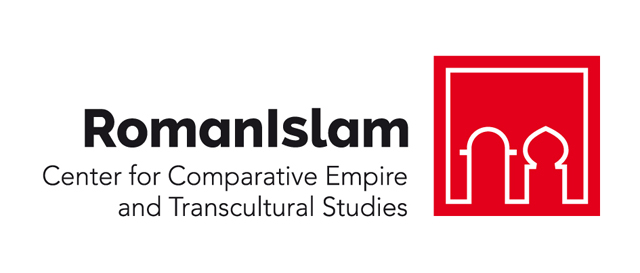Prof. Dr. Pablo C. Díaz Martínez
September 2020 - November 2020

Research Project: The Visigothic Peasantry. Contextual Analysis of the Elementary Levels of Territorial Administration
The study of the nuclear structures of the Visigothic administration has received little attention since Sánchez Albornoz (1943) analyzed the disappearance of the Roman municipality in Hispania. The works of García Moreno (1974) or Martin (2003) incorporated a pyramidal perception into their studies, about the Visigothic administration or the political geography of the kingdom, where the basic elements of the population and organizational social system were barely reflected.
Recent archaeological approaches allow us to better understand what in Visigothic sources was summarized in a list of categories barely endowed with content: castellum, vicus aut villa vel diversorium (LV IX.1..21, c. 687-702); however, they are still very partial approaches that almost always ignore the dynamic realities that only historical sources can reconstruct. In fact, the theoretical formulation, built largely around the search for ‘the origins of peasant villages’, has provoked a highly artificial debate, in many cases formalist, which hardly helps to understand the population phenomenon, much less the relational dynamics in which these housing units were incardinated.
The work project proposed here is based on considering that the ignorance comes, in many cases, from a rigidly institutionalist
reading of the legal sources. This has meant that the relational dynamics that we consider are usually ignored. We think that the formulations of the same laws provide precious information on everyday community relations. Of course, this information must be checked against that provided by the ecclesiastical legislation that presents some highly descriptive cases on the relations established within the great ecclesiastical properties. Not forgetting the hagiographic sources, or the epistolary production.
Profile
Prof. Dr. Pablo C. Díaz holds a PhD in History from the University of Salamanca, where he carried out his thesis under the supervision of Professor Marcelo Vigil, dealing there with the study of the economic and social relations generated by the Visigothic monasticism in Hispania. He showed not only their role as reproducers of the current order, but also their ability to adapt to highly diverse environments, both because of their environmental conditions and because they represent antagonistic social and property concepts. Professor of Ancient History since 1982, he focuses his most recent research on the Late Antique period, especially assessing the impact that the invasions of the Suevi and Visigoths had on the preceding Hispano-Roman structures. This work is carried out from a multiple perspective, taking into account both the socio-economic aspects that are at the origin of his research, and political-legal and ideological-religious elements. Specifically, he is interested in the processes of institutional adaptability of the Suevi and Visigoths, the continuity or rupture in the forms of exploitation of the territory, or the response of peasant communities to the dominant forms in the environment. Such a process requires a global understanding of the Late Antique ownership structure; as well as the study of the coexistence of production mechanisms and the asymmetric appropriation of surpluses that are evidents in the sources of the period.
CV
Selected Publications
Pablo C. Díaz / José Carlos Martín-Iglesias / Margarita Vallejo Girvés (2020a), La Hispania tardoantigua y visigoda en las fuentes epistolares (Nueva Roma, 51), Madrid.
Pablo C. Díaz (2020b), “Social Plurality and Monastic Diversity in Late Antique Hispania (Sixth to Eighth Century)”, in Alison Beach, Isabelle Cochelin, eds., The Cambridge History of Medieval Monasticism in the Latin West. 1. Origins to the Eleventh Century, Cambridge (Reino Unido): Cambridge University Press, 195 – 211.
Pablo C. Díaz (2020c), “Quam ille de vita regis […] consuluisset. Adivinación y violencia en la Hispania visigoda”, in: Santiago Montero, Sabino Perea, eds., Adivinación y violencia en el mundo romano, Salamanca: Ediciones Universidad de Salamanca, 271-292.
Pablo C. Díaz (2020d), “Honorio I y la Iglesia hispana del siglo VII”, in: Irene Barbiera, Francesco Borri and Annamaria Pazienza, eds., I Longobardia a Venezia. Scritti per Stefano Gasparri, Turnhout: Brepols, 249-259.
Pablo C. Díaz (2020e), “Teoría y práctica de la medicina visigoda. Del enciclopedismo de Isidoro a la enfermería monástica”, Asclepio, 72(1), 299.
Pablo C. Díaz (2020f), “Nihil suo arbitrio uel minimum aliquid agere: voluntad del monje y tiempos del monasterio en las reglas visigodas del siglo VII”, in: Letizia Pani Ermini (a cura di), Il tempo delle comunità monastiche nell’alto medioevo (Atti del Convegno internazionale di studio, Roma-Subiaco, 9-11 giugno 2017), Spoleto: Fondazione Centro italiano di studi sull’alto medioevo, 29-48.
Pablo C. Díaz (2019a), “Isidore's Enterprise: The Monastery as 'Perfect Villa' and Beyond", in: Olivier Delouis and Maria Mossakovska-Gaubert, eds., La vie quotidienne des moines en Orient et en Occident (IVe-Xe siècle). II. Questions transversales, Le Caire-Athènes, Institut Français d’Archéologie Orientale-École Française d’Athènes, 373-391.
Pablo C. Díaz (2019b), “El esquema provincial en el contexto administrativo de la monarquía visigoda de Toledo, Mélanges de la Casa de Velázquez 49-2, 77-108. http://journals.openedition.org/mcv/11009.
Pablo C. Díaz (2019c), “Bárbaros, romanos y la conformación de identidades provinciales en el siglo V: el caso de Gallaecia”, in: Tommaso Gnoli and Valerio Neri, eds., Le identità regionali nell’impero tardoantico, Milano, Jouvence Editore, 99-137.
Pablo C. Díaz (2019d), “La conversión personal como instrumento de salvación en el eremitismo y en el monacato visigodo”, in: Amélie de las Heras, Florian Gallon and Nicolas Pluchot, eds., Ouvrer pour le salut. Moines, chanoines et frères dans la Péninsule Ibérique au Moyen Âge, Madrid: Casa de Velázquez, 17-38.


